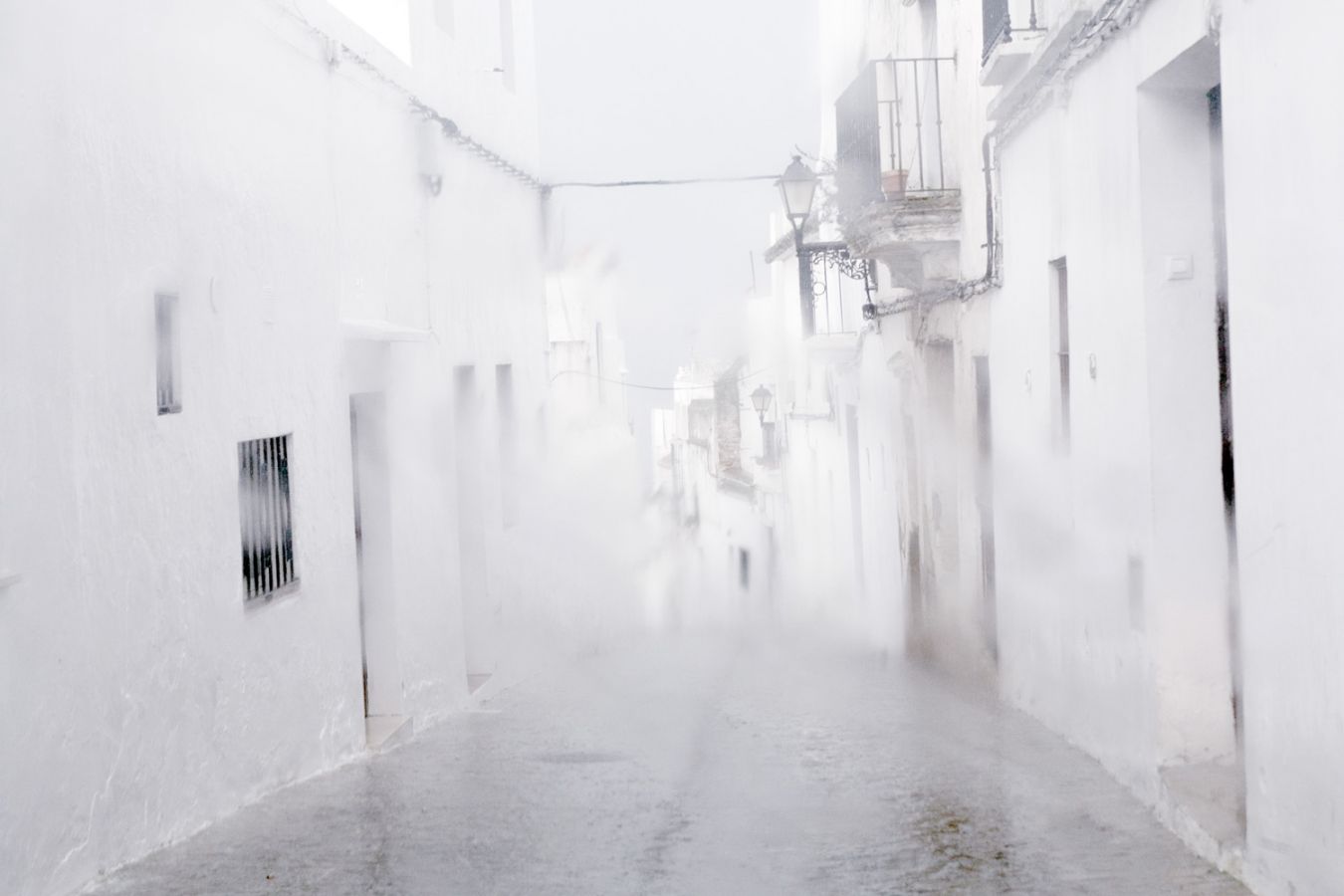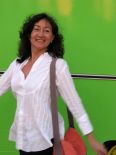You have a taste for literature, film and photography: why have you given preference to the latter as a means of expression?In
truth, I have hesitated between the three forms. I once went on a shoot
in India, and took pictures there. It occurred to me more clearly that
photography was forcing me to be fully in the present moment, completely
there, whereas in film it’s always possible to rearrange and
reorganise, as it is with writing. What I found interesting is the
urgency of being present in photography: if you are not open to
everything happening, you’re finished. I therefore chose photography for
the enjoyment as well as to fulfil an inner necessity.
Which doesn’t
mean I have completely given up the other two media: as well as
shooting, I have also made many recordings of music and voices. I have
also made two documentary films to reflect a broader dimension. And I
write all the time: I have suitcases full of little notebooks, filled
with bits of sentences, which are like pictures.
All of your work is deeply anchored in the Mediterranean. Why are you so fond of it?What
guides me is essentially a quest of the intimate, the soul. From my
childhood’s Algerian flavour – inherited from my father and grandmother -
I have kept a yearning for the South. It’s my own Proust’s madeleine.
My Mediterranean odyssey began in Andalusia, in the mid-1980s, then
across North Africa, especially Morocco, and Jerusalem, Bethlehem,
Lebanon, Libya, and now Southern Italy. I even went to Portugal;
although not geographically Mediterranean, I was happy to include it –
more important than borders, my key interest is the soul of the South. I
focus on what is essential, what I can find from one country to the
other, with different energies.
How would you describe the Mediterranean soul? And how do you give it a face?It’s
a blend of many things: light and dark, glints of harsh light that hit
you hard, that can kill certain things, dry them out; it’s also the
shade in which people find shelter, and in which many details are played
out. What I constantly seek - this dawned on me over time - is
strangeness and magic, the mystery that can arise in the most banal
everyday scenes. Anyone should be able to travel through the image
without me forcing anything upon them. What I show is not a truth: it’s
something broader, which flourishes over time, in life.
When shooting
in these locations, I seek out tensions: light/shadow and
sensuality/rigor. The Mediterranean is full of such contrasts. There are
multiple colours, scents, fragrances, materials, and at the same time,
there is a kind of rigor resulting from both religion and the aridness
of life. There’s no other choice but to fight it out and live. All the
places I have loved and photographed are places steeped in history,
miscegenation, places which have experienced a rise and fall.
I’m not
trying to document these cities, just taking photographs in these
cities. I photograph people and settings, like a theatre in which all
these passions are played out - emotions which ultimately become my own,
which I remember from my childhood, which make me who I am. It’s like
an imaginary, poetic echo ringing between them and me.
How do you work in these surroundings? Posed or stolen shots?
I
walk and walk and walk, I seek out, and all of a sudden I’m struck by a
movement, a gaze, a head of hair. The space appears to me like a stage
set: I see lines, people stooping, about to move, about to express
something that appeals to me… which is when I move closer. I set up, I
reveal myself as a photographer. Sometimes, people wonder why I camp out
there for a whole hour although nothing’s happening. I instantly feel
when I’m not welcome, and if so, I leave. If I’m accepted, I stay, and
my presence causes things; people sometimes start to “act” for me. I
love the mix of spontaneity and staged, provoked situations: it means
that even though I stay behind the lens, I too can exist in the image.
Your images always have a very assertive, very present composition. Do you constantly have these dynamics in mind?I
love framing my shots, I truly enjoy it. I am constantly looking for
something very specific: to find it, I move around a lot, I almost
dance, it’s almost a trance. There’s no reasoning, no censorship: I am
free, free to do anything. I can frame an eye, or just an arm. I love to
play: photography makes life fun. I like to play with depth of field
and motion blur, to focus on secondary characters hidden in the
background. I like to look for and find details in the shadows; I use
the light as a revealer, a beacon, a torch.
At the same time, I also
have a form of ambivalence in me, which I believe characterizes the
Mediterranean. My images reflect these contrasts: rigor and gentleness,
darkness and light, love and death. In them, as in the Mediterranean,
there is a sense of the tragic which somehow does not restrain life’s
fullness: openness, a manner of loving with arms outstretched.
Limited edition, numbered and signed.

 Over twenty years ago, Martine Voyeux encountered Andalusia - the first stop on a lengthy Mediterranean odyssey which she is still embarked on to this day. “I consider these places, she explains, as a mirror of my thoughts, my emotions of the moment.” Her photography does not draw up a panorama or describe a situation – rather, it subtly outlines, city after city, an intimate cartography of a fantastical lost “home”, a yearning for the Orient which has never loosened its grip. Each of her images is a space where the Mediterranean soul’s contrasts come together: light and darkness, life and death, roundness and rigour, cries and whispers. Little everyday stories and great historical events accumulate in strata on the image, as they do on the blackened façades of Naples. There is mystery in her photography, and nobody to hold your hand through the maze. The labyrinthine paths Martine Voyeux follows offer her viewers a chance to happily lose themselves.
Over twenty years ago, Martine Voyeux encountered Andalusia - the first stop on a lengthy Mediterranean odyssey which she is still embarked on to this day. “I consider these places, she explains, as a mirror of my thoughts, my emotions of the moment.” Her photography does not draw up a panorama or describe a situation – rather, it subtly outlines, city after city, an intimate cartography of a fantastical lost “home”, a yearning for the Orient which has never loosened its grip. Each of her images is a space where the Mediterranean soul’s contrasts come together: light and darkness, life and death, roundness and rigour, cries and whispers. Little everyday stories and great historical events accumulate in strata on the image, as they do on the blackened façades of Naples. There is mystery in her photography, and nobody to hold your hand through the maze. The labyrinthine paths Martine Voyeux follows offer her viewers a chance to happily lose themselves.